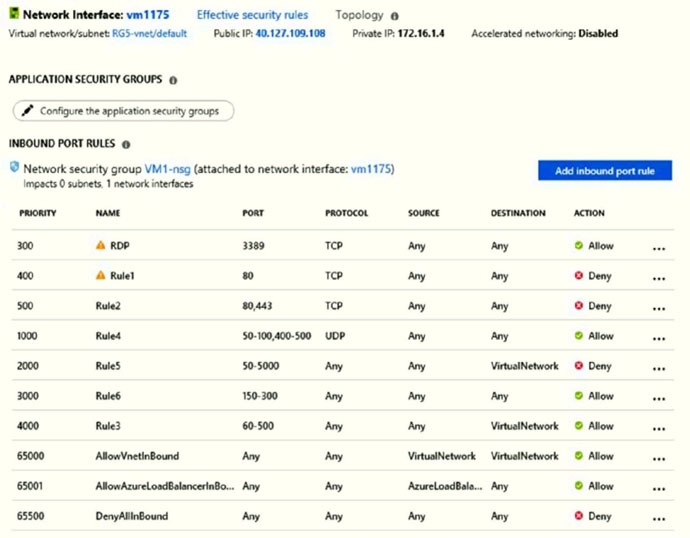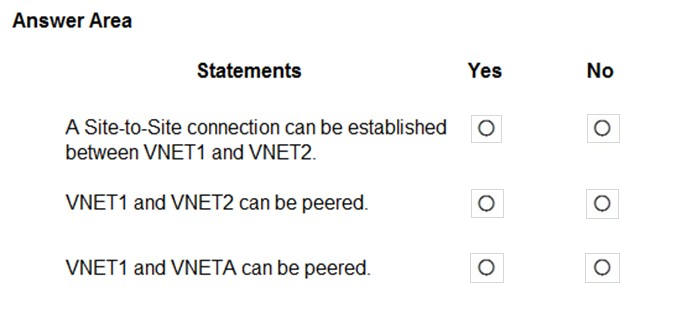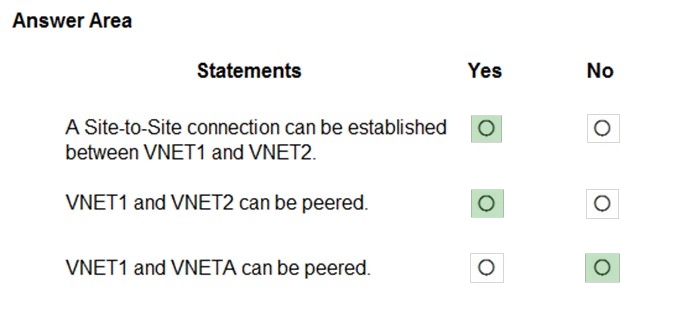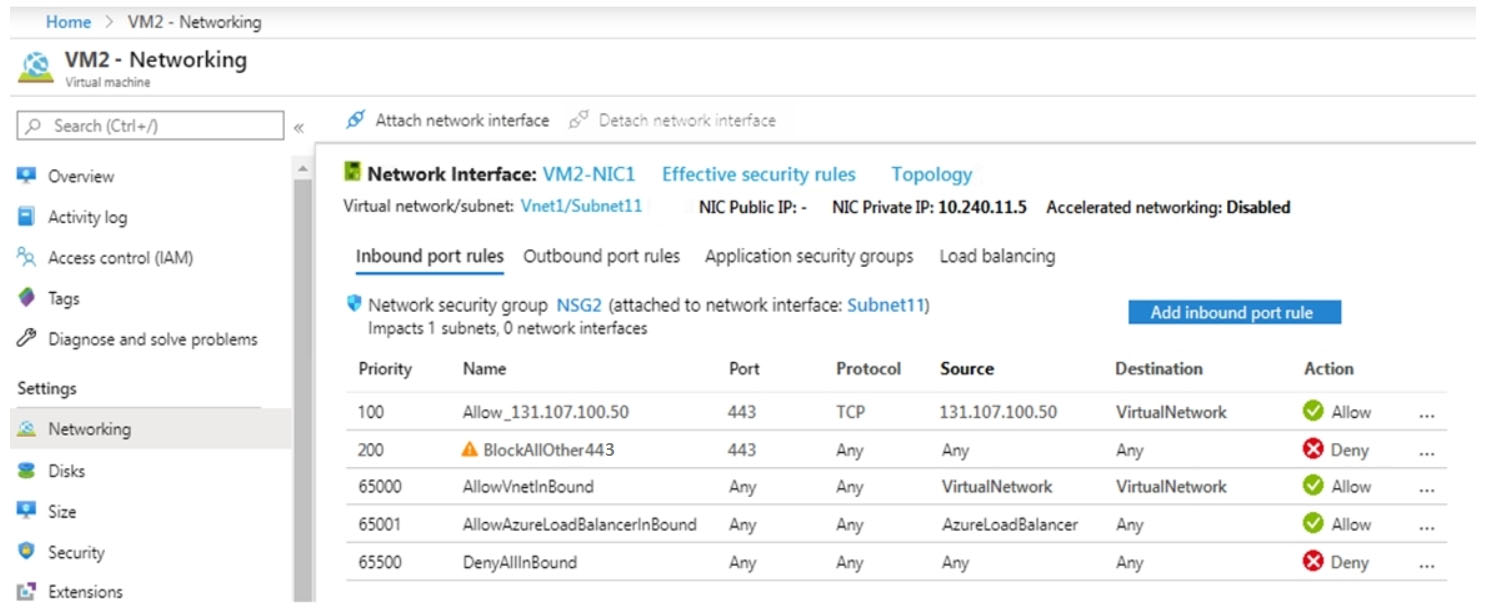Dump | AZ 104: Microsoft Azure Administrator miễn phí
Note: This question is part of a series of questions that present the same scenario. Each question in the series contains a unique solution that might meet the stated goals. Some question sets might have more than one correct solution, while others might not have a correct solution.
After you answer a question in this section, you will NOT be able to return to it. As a result, these questions will not appear in the review screen.
You have a computer named Computer1 that has a point-to-site VPN connection to an Azure virtual network named VNet1. The point-to-site connection uses a self-signed certificate.
From Azure, you download and install the VPN client configuration package on a computer named Computer2.
You need to ensure that you can establish a point-to-site VPN connection to VNet1 from Computer2.
Solution: You export the client certificate from Computer1 and install the certificate on Computer2.
Does this meet the goal?
- A. Yes
- B. No
You have an Azure virtual machine named VM1.
The network interface for VM1 is configured as shown in the exhibit. (Click the Exhibit tab.)
You deploy a web server on VM1, and then create a secure website that is accessible by using the HTTPS protocol. VM1 is used as a web server only.
You need to ensure that users can connect to the website from the Internet.
What should you do?
- A. Modify the protocol of Rule4
- B. Delete Rule1
- C. For Rule5, change the Action to Allow and change the priority to 401
- D. Create a new inbound rule that allows TCP protocol 443 and configure the rule to have a priority of 501.
Note: This question is part of a series of questions that present the same scenario. Each question in the series contains a unique solution that might meet the stated goals. Some question sets might have more than one correct solution, while others might not have a correct solution.
After you answer a question in this section, you will NOT be able to return to it. As a result, these questions will not appear in the review screen.
You have an Azure subscription that contains 10 virtual networks. The virtual networks are hosted in separate resource groups.
Another administrator plans to create several network security groups (NSGs) in the subscription.
You need to ensure that when an NSG is created, it automatically blocks TCP port 8080 between the virtual networks.
Solution: From the Resource providers blade, you unregister the Microsoft.ClassicNetwork provider.
Does this meet the goal?
- A. Yes
- B. No
HOTSPOT -
You manage two Azure subscriptions named Subscription1 and Subscription2.
Subscription1 has following virtual networks:
The virtual networks contain the following subnets:
Subscription2 contains the following virtual network:
✑ Name: VNETA
✑ Address space: 10.10.128.0/17
✑ Location: Canada Central
VNETA contains the following subnets:
For each of the following statements, select Yes if the statement is true. Otherwise, select No.
NOTE: Each correct selection is worth one point.
Hot Area:

With VNet-to-VNet you can connect Virtual Networks in Azure across different regions.
Box 2: Yes -
Azure supports the following types of peering:
✑ Virtual network peering: Connect virtual networks within the same Azure region.
✑ Global virtual network peering: Connecting virtual networks across Azure regions.
Box 3: No -
The virtual networks you peer must have non-overlapping IP address spaces.
Reference:
https://azure.microsoft.com/en-us/blog/vnet-to-vnet-connecting-virtual-networks-in-azure-across-different-regions/ https://docs.microsoft.com/en-us/azure/virtual-network/virtual-network-manage-peering#requirements-and-constraints
Note: This question is part of a series of questions that present the same scenario. Each question in the series contains a unique solution that might meet the stated goals. Some question sets might have more than one correct solution, while others might not have a correct solution.
After you answer a question in this section, you will NOT be able to return to it. As a result, these questions will not appear in the review screen.
You have an app named App1 that is installed on two Azure virtual machines named VM1 and VM2. Connections to App1 are managed by using an Azure Load
Balancer.
The effective network security configurations for VM2 are shown in the following exhibit.
You discover that connections to App1 from 131.107.100.50 over TCP port 443 fail.
You verify that the Load Balancer rules are configured correctly.
You need to ensure that connections to App1 can be established successfully from 131.107.100.50 over TCP port 443.
Solution: You create an inbound security rule that denies all traffic from the 131.107.100.50 source and has a cost of 64999.
Does this meet the goal?
- A. Yes
- B. No
- « Previous
- Next »
Viewing page 86 out of 122 pages.
Viewing questions 426-430 out of 606 questions
Dump định dạng mới giả lập EXAM + PDF
0.00
Chưa có đánh giá nào cho sản phẩm này.





Tài liệu
Tài liệu